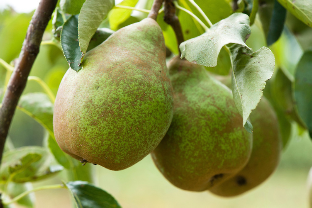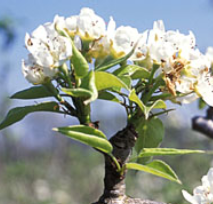

50. Glou Morceau - Dessert Pear

Season : Flowers mid-season - April-May, but harvest can be as late as November. The pear keeps well on the tree and the flavour will develop best in a sunny, sheltered spot.
Pollination : Self Sterile Technically Group B, but the blossom lasts a long time. It is therefore considered a good pollinator for many other pears.


Pyrus communis 'Glou Morceau'
An old-fashioned dessert pear, buttery rich and sweet
This old winter pear is nearly lost to cultivation, but is worth growing because of the high quality of the fruit and because the pear comes in season in early winter when there are few others.
Skin pale dull olive green, a little inclining to yellow, and covered with numerous grey russetty specks/patches.
The flesh is whitish, very juicy, generally smooth and melting but may be a little gritty at the core.
It keeps well if picked a little underripe.
The name has nothing to do with Gloucester!
The pear was raised from seed by the Abbe of Mons, M. Hardenpont, in about 1750 in Belgium. It was introduced into France in 1806 and after some confusion with another pear, was named Beurre d'Hardenpont. It was introduced into England in 1820 under the name 'Glou Morceau', which means delicious morsel in French.




